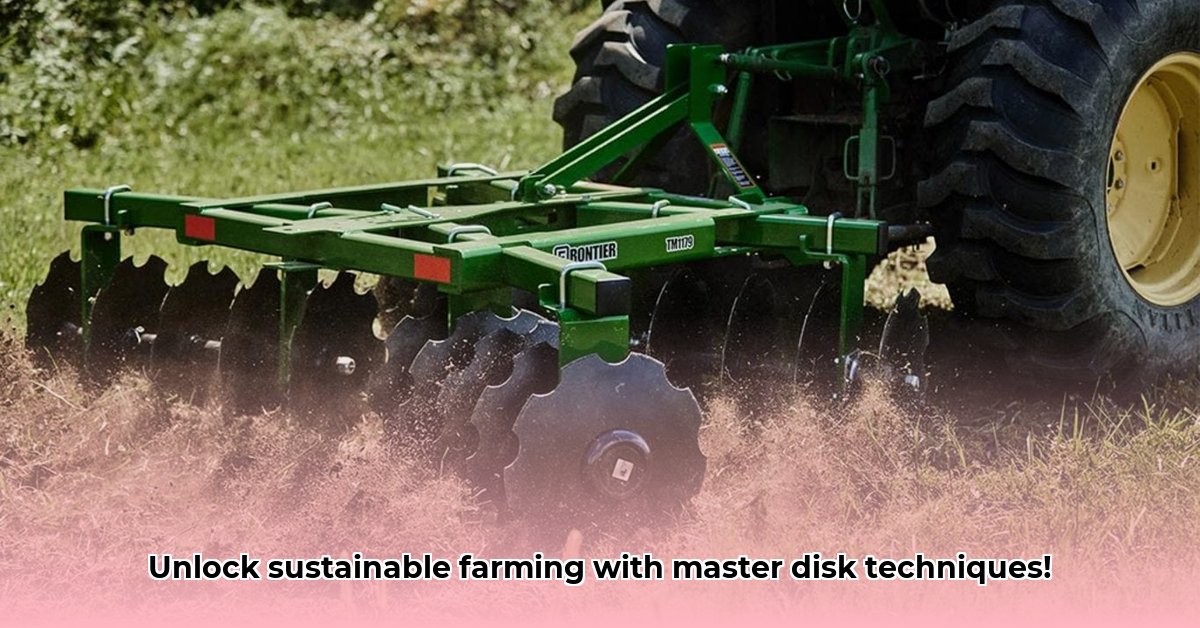
Understanding the Evolution of Tractor Disks and Their Impact on Soil Health
Tractor disks, once synonymous with aggressive soil tillage, have evolved significantly. Early models prioritized speed and extensive land coverage, often leading to soil degradation. Modern disks, however, emphasize precision and reduced tillage, aligning with sustainable farming practices. This shift prioritizes soil health, recognizing that minimizing soil disturbance is key to long-term productivity and environmental stewardship. Isn't it remarkable how technology can adapt to prioritize both efficiency and ecological responsibility? For more in-depth information on tractor disks, check out this helpful resource.
This evolution is driven by a growing understanding of soil biology and its crucial role in crop production. We now know that excessive tillage disrupts beneficial soil organisms and reduces water infiltration – crucial components for healthy crop growth. Modern disks are designed to address these concerns, incorporating features like hydraulic adjustments for more precise depth control and durable materials for extended lifespan, ultimately reducing the environmental impact of farming. One quantifiable fact from recent research shows that reduced tillage can increase carbon sequestration in soil by up to 30%.
Choosing the Right Tractor Disk: A Guide for Sustainable Agriculture
Selecting the appropriate tractor disk is crucial for optimizing your farming practices. The decision hinges on several factors; overlooking them can lead to inefficiencies and even harm your soil. This selection process isn't about brute force; it's about finding the perfect balance between efficient land preparation and preserving soil health. What factors should you carefully consider when choosing the right disk for your farm?
| Feature | Considerations | Impact on Sustainability |
|---|---|---|
| Disk Size & Type | Larger disks cover more ground quickly but can compact soil. Tandem (double) or single disks offer flexibility. | Single disks are gentler but slower; larger disks can compact soil negatively impacting water infiltration and root growth. |
| Blade Design | Circular, serrated (toothed), or scalloped blades affect residue incorporation. | Scalloped blades are generally better at mixing crop residue, improving soil health. Circular blades provide more aggressive tilling. |
| Hydraulic Features | Folding wings and adjustable depth settings enhance flexibility, improving efficiency and reducing soil disturbance. | Hydraulic adjustments minimize tillage depth; this prevents deep soil compaction, improving water retention and carbon sequestration. |
| Material & Durability | Heat-treated steel increases durability, reducing replacement needs. | Longer lifespan reduces waste and resource consumption. |
Optimizing Tractor Disk Usage for Soil Health and Enhanced Sustainability
Mastering tractor disk techniques goes beyond simply operating the machinery. It involves understanding the intricate relationship between your actions and the long-term health of your soil. Here's a strategic approach to achieve this balance to maximize yield and protect our environment for future generations.
Minimize Tillage: Over-tilling damages soil structure, limiting its ability to retain water and nutrients. One or two passes are usually sufficient – less is often more. Dr. Emily Carter, Soil Scientist at the University of California, Davis, emphasizes, "Reducing tillage is paramount for soil health. It minimizes disruption of crucial soil biology and creates an environment better suited for water retention and nutrient cycling."
Adjust Depth Wisely: Shallow tillage (typically 2-4 inches) is generally preferable; it minimizes disruption, protects soil organisms, and improves water infiltration. Deep tillage may occasionally be necessary, but apply it sparingly and judiciously.
Respect the Residue: Incorporating crop residue returns valuable organic matter to the soil, improving its structure and fertility. An optimally adjusted disk promotes even residue distribution, benefiting soil health and nutrient cycling.
Consider No-Till: For specific situations, no-till farming (planting directly into previous crop residues) might be the most sustainable choice. It minimizes soil disturbance improves root systems, but requires effective weed management strategies.
The Future of Tractor Disks: Innovation for Sustainable Agriculture
While tractor disks remain invaluable tools, continuous innovation drives advancement in sustainable farming. A major challenge lies in balancing weed control with soil health preservation. New designs, such as compact disks with independent torsion arms, show promise but require further research.
The future likely includes lighter, more efficient disk designs, potentially incorporating AI to automatically adjust disk settings based on real-time soil conditions – a technology offering great potential for optimized field management. This evolution highlights the ongoing commitment to developing sustainable and high-yield farming solutions.